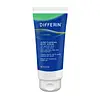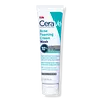What's inside
What's inside
 Key Ingredients
Key Ingredients

 Benefits
Benefits

 Concerns
Concerns

 Ingredients Side-by-side
Ingredients Side-by-side

Salicylic Acid
MaskingAcrylates Copolymer
Aloe Barbadensis Leaf Extract
EmollientButylene Glycol
HumectantButyrospermum Parkii Butter
Skin ConditioningCaprylic/Capric Triglyceride
MaskingCocamidopropyl Betaine
CleansingCoco-Betaine
CleansingCoconut Acid
CleansingDisodium EDTA
Parfum
MaskingGlycerin
HumectantGlycol Distearate
EmollientGlycolic Acid
BufferingHydroxypropyl Methylcellulose
Emulsion StabilisingKaolin
AbrasiveLaureth-4
EmulsifyingLauroyl/Myristoyl Methyl Glucamide
EmollientMannitol
HumectantMicrocrystalline Cellulose
AbsorbentOlive Oil PEG-8 Esters
EmollientParaffin
PerfumingPolyquaternium-39
Prunus Amygdalus Dulcis Oil
Skin ConditioningRetinyl Palmitate
Skin ConditioningSilica
AbrasiveSodium C14-16 Olefin Sulfonate
CleansingSodium Chloride
MaskingSodium Hydroxide
BufferingSodium Sulfate
Theobroma Cacao Seed Butter
EmollientTocopheryl Acetate
AntioxidantUltramarines
Water
Skin ConditioningSalicylic Acid, Acrylates Copolymer, Aloe Barbadensis Leaf Extract, Butylene Glycol, Butyrospermum Parkii Butter, Caprylic/Capric Triglyceride, Cocamidopropyl Betaine, Coco-Betaine, Coconut Acid, Disodium EDTA, Parfum, Glycerin, Glycol Distearate, Glycolic Acid, Hydroxypropyl Methylcellulose, Kaolin, Laureth-4, Lauroyl/Myristoyl Methyl Glucamide, Mannitol, Microcrystalline Cellulose, Olive Oil PEG-8 Esters, Paraffin, Polyquaternium-39, Prunus Amygdalus Dulcis Oil, Retinyl Palmitate, Silica, Sodium C14-16 Olefin Sulfonate, Sodium Chloride, Sodium Hydroxide, Sodium Sulfate, Theobroma Cacao Seed Butter, Tocopheryl Acetate, Ultramarines, Water
Benzoyl Peroxide 10%
Water
Skin ConditioningGlycerin
HumectantPropylene Glycol
HumectantCocamidopropyl Hydroxysultaine
CleansingSodium C14-16 Olefin Sulfonate
CleansingPotassium Hydroxide
BufferingCeramide NP
Skin ConditioningCeramide AP
Skin ConditioningCeramide EOP
Skin ConditioningCarbomer
Emulsion StabilisingNiacinamide
SmoothingGlycolic Acid
BufferingTrideceth-6
EmulsifyingTriethyl Citrate
MaskingSodium Citrate
BufferingSodium Hyaluronate
HumectantSodium Hydroxide
BufferingSodium Lauroyl Lactylate
EmulsifyingCholesterol
EmollientPropanediol
SolventTetrasodium EDTA
Caprylyl Glycol
EmollientDiethylhexyl Sodium Sulfosuccinate
CleansingPhytosphingosine
Skin ConditioningXanthan Gum
EmulsifyingAcrylates/C10-30 Alkyl Acrylate Crosspolymer
Emulsion StabilisingBenzoic Acid
MaskingPEG-30 Dipolyhydroxystearate
EmulsifyingBenzoyl Peroxide 10%, Water, Glycerin, Propylene Glycol, Cocamidopropyl Hydroxysultaine, Sodium C14-16 Olefin Sulfonate, Potassium Hydroxide, Ceramide NP, Ceramide AP, Ceramide EOP, Carbomer, Niacinamide, Glycolic Acid, Trideceth-6, Triethyl Citrate, Sodium Citrate, Sodium Hyaluronate, Sodium Hydroxide, Sodium Lauroyl Lactylate, Cholesterol, Propanediol, Tetrasodium EDTA, Caprylyl Glycol, Diethylhexyl Sodium Sulfosuccinate, Phytosphingosine, Xanthan Gum, Acrylates/C10-30 Alkyl Acrylate Crosspolymer, Benzoic Acid, PEG-30 Dipolyhydroxystearate
 Reviews
Reviews

Ingredients Explained
These ingredients are found in both products.
Ingredients higher up in an ingredient list are typically present in a larger amount.
Glycerin is already naturally found in your skin. It helps moisturize and protect your skin.
A study from 2016 found glycerin to be more effective as a humectant than AHAs and hyaluronic acid.
As a humectant, it helps the skin stay hydrated by pulling moisture to your skin. The low molecular weight of glycerin allows it to pull moisture into the deeper layers of your skin.
Hydrated skin improves your skin barrier; Your skin barrier helps protect against irritants and bacteria.
Glycerin has also been found to have antimicrobial and antiviral properties. Due to these properties, glycerin is often used in wound and burn treatments.
In cosmetics, glycerin is usually derived from plants such as soybean or palm. However, it can also be sourced from animals, such as tallow or animal fat.
This ingredient is organic, colorless, odorless, and non-toxic.
Glycerin is the name for this ingredient in American English. British English uses Glycerol/Glycerine.
Learn more about GlycerinGlycolic Acid is arguably the most famous alpha hydroxy acid (AHA) with tons of research backing its benefits.
It is found naturally in sugar cane but the form used in skincare is usually synthetic for purity and stability.
Glycolic acid removes the top layer of dead skin cells to allow newer and fresher ones to emerge.
AHAs work by breaking down the structural “glue” that holds old skin cells in place. When that buildup is gone, your skin can renew itself more efficiently.
Research also shows glycolic acid stimulates collagen production, helping to firm and thicken the skin over time. This is one of its biggest advantages over other AHAs.
Overall, glycolic acid helps with:
Fun fact: Glycolic acid boosts skin hydration by helping it produce molecules that increase hyaluronic acid naturally.
To work best, glycolic acid products should have a pH between 3-4 (that’s where exfoliation is most effective but still gentle on skin).
The pH and concentration of a product are key to its effectiveness:
It is normal to feel a slight stinging sensation when using glycolic acid. This usually fades as your skin adjusts.
Because glycolic acid has the smallest molecular size in the AHA family, it can penetrate deeper, which enhances its effectiveness but also makes it more likely to irritate sensitive skin.
If your skin is very sensitive or prone to rosacea, glycolic acid may be too strong; in that case, try milder options like lactic acid or a PHA instead.
Recent studies suggest glycolic acid might even help protect against UV damage. But don’t skip sunscreen! Freshly exfoliated skin is more sensitive to the sun.
Glycolic acid is a skincare superstar. It smooths, brightens, hydrates, and firms the skin. Unless you’re highly sensitive, it’s well worth adding to your routine.
Read more about some other popular AHA's here:
Learn more about Glycolic AcidSodium C14-16 Olefin Sulfonate is a cleansing agent made from a mixture of long chain sulfonate salts. It can also help produce foam.
This ingredient may be drying. We recommend speaking with a professional if you have concerns.
Sodium Hydroxide is also known as lye or caustic soda. It is used to adjust the pH of products; many ingredients require a specific pH to be effective.
In small amounts, sodium hydroxide is considered safe to use. However, large amounts may cause chemical burns due to its high alkaline.
Your skin has a natural pH and acid mantle. This acid mantle helps prevent harmful bacteria from breaking through. The acid mantle also helps keep your skin hydrated.
"Alkaline" refers to a high pH level. A low pH level would be considered acidic.
Learn more about Sodium HydroxideWater. It's the most common cosmetic ingredient of all. You'll usually see it at the top of ingredient lists, meaning that it makes up the largest part of the product.
So why is it so popular? Water most often acts as a solvent - this means that it helps dissolve other ingredients into the formulation.
You'll also recognize water as that liquid we all need to stay alive. If you see this, drink a glass of water. Stay hydrated!
Learn more about Water